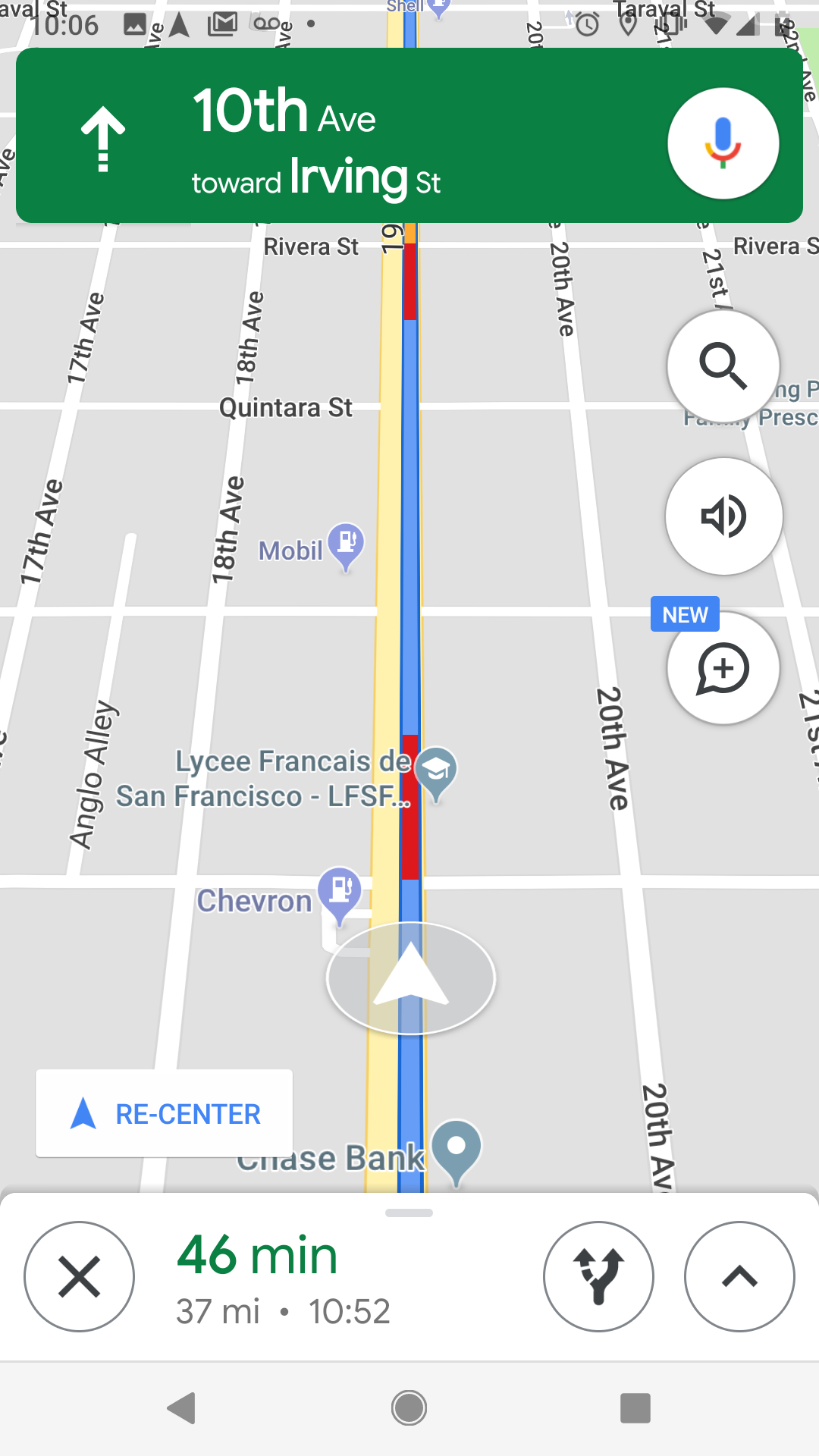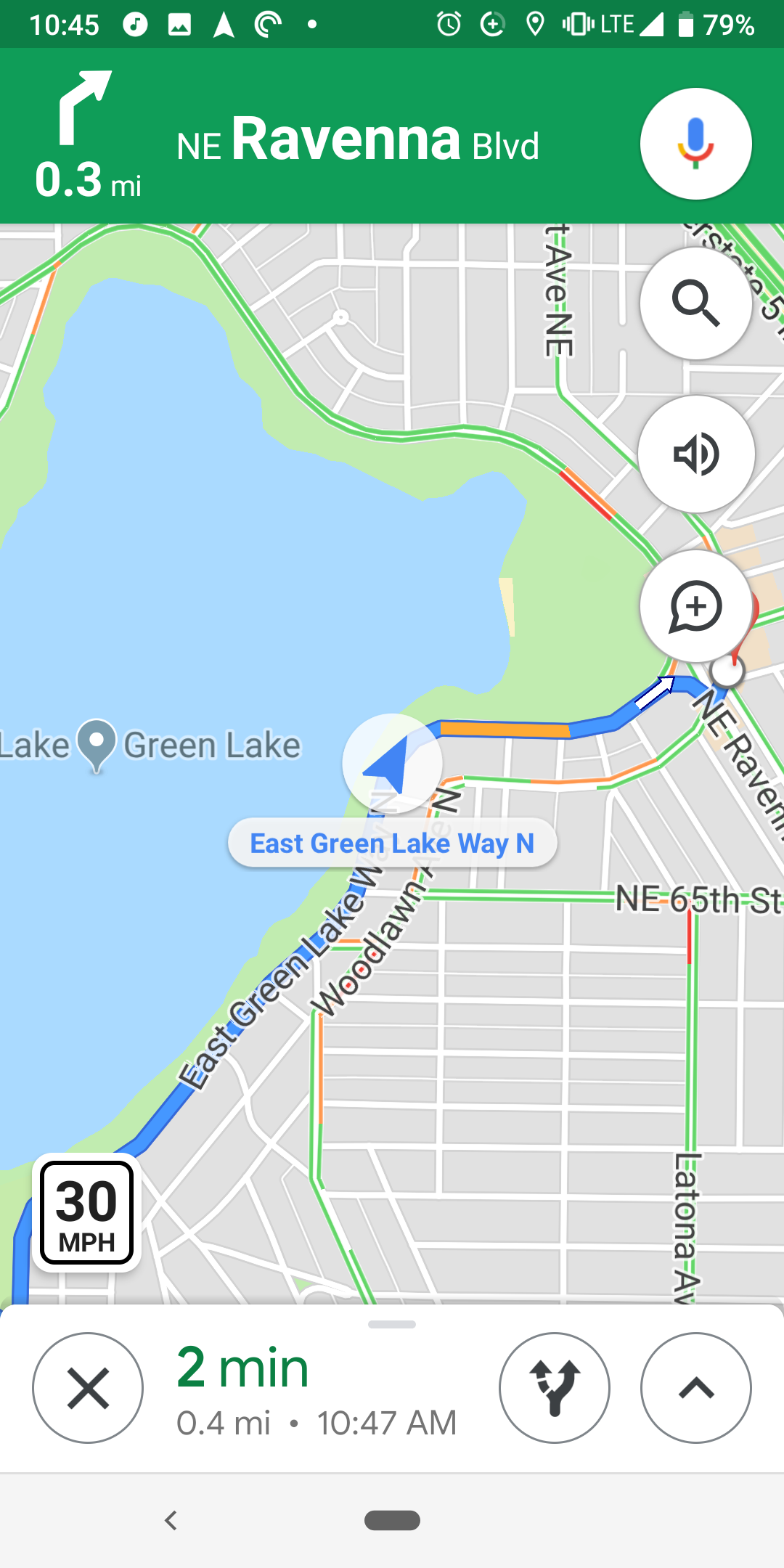Hot and Cold Media: Google Maps Edition
When you’re using Google Maps navigation, the default perspective is first-person. The map is rotated and scaled to match your perspective as the driver/walker/biker: up is forward, down is backward, left and right both correspond to the real world left and right, assuming you’re holding your phone in its typical orientation. If you make a turn, the whole map rotates with you to maintain the correct first-person perspective.

The default Google Maps perspective
It’s really easy to see why this might be a good idea. Paper maps are normally oriented north-south, but most of the time when I’m trying to get from point A to point B I don’t care about whether I’m about to turn to the west - I just want to know if I need to go right or left. Paper maps don’t turn automatically, but I used to sometimes physically rotate maps to match the perspective I was seeing, a low-tech way of doing what Google maps navigation does automatically.
Marshall Mcluhan might describe this as a “hot” map media experience. The media is “high definition,” a simulation of reality rather than a mere representation. Paper maps are most certainly “cold,” requiring its users to do a fair bit of mental work to translate what they’re seeing on the map to the physical, geospatial reality around them.
I don’t miss having to page through an atlas to plan a road trip but I do think that there’s something that is lost when first person Google maps style navigation becomes the primary way used to navigate through place. I notice that I can almost never remember basic directions to routes I’ve driven dozens of times, and even if I might know that place A is 5 minutes away from place B and place C is 10 minutes away from place B, I have no idea where place A might be relative to place C. Google maps enables a kind of shitty teleportation, where I don’t have to pay any attention to my surroundings as I navigate them - I merely follow directions and get to where I’m going, thanks to how “hot” the map technology is (in Mcluhan’s sense of the word).
It’s this kind of thing that makes stories of people following Google/Apple maps into a desert to the point of being stranded seem actually believable.
You can force north-south orientation even during navigation by tapping the compass icon (at least at the time of this writing). This one weird trick™ already helps to recover some of the “coolness” of a paper map (pun intended). I notice very quickly if I’ve accidentally routed to the wrong place, since I have a vague sense of whether my destination is north/south/east/west of my current location. I can improvise shortcuts and detours around random construction or school buses. I have a sense of where different things are relative to each other, since I’m forced to constantly evaluate relative positions and directions as I navigate.

The north-south orientation navigation view
Here’s to hoping that Google never kills this feature. “Cold” tech is a rare thing.
Sign up for the mailing list

Comments